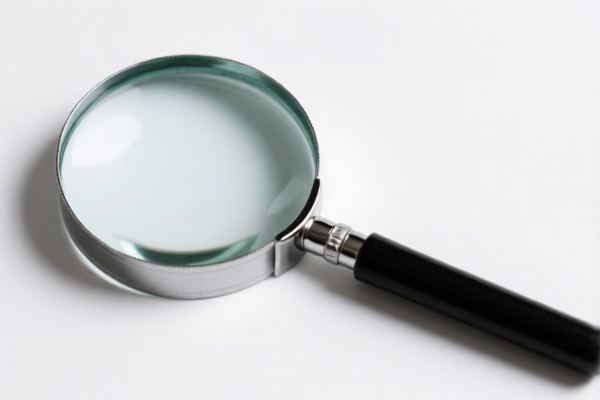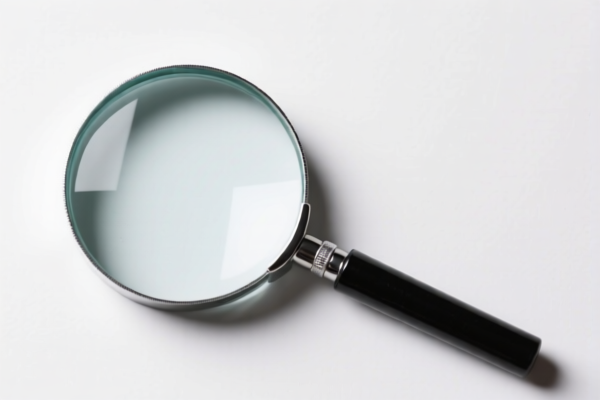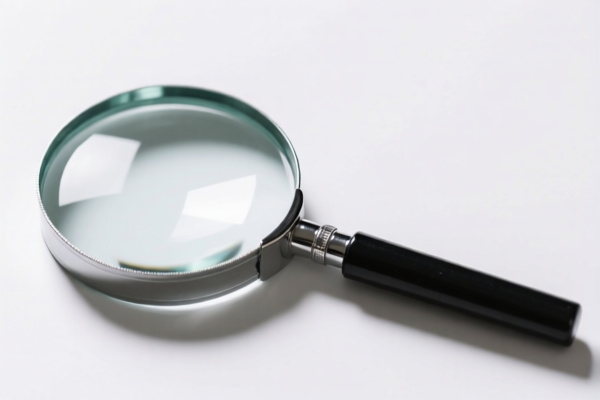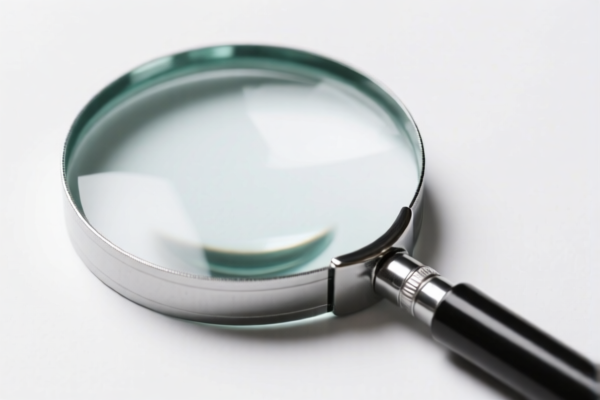| HS Code | Official Doc | Tariff Rate | Origin | Destination | Effective Date |
|---|---|---|---|---|---|
| 9031499000 | Doc | 55.0% | CN | US | 2025-05-12 |
| 9001904000 | Doc | 55.0% | CN | US | 2025-05-12 |
| 9001906000 | Doc | 55.0% | CN | US | 2025-05-12 |
| 7014003000 | Doc | 58.4% | CN | US | 2025-05-12 |
| 7014005000 | Doc | 58.3% | CN | US | 2025-05-12 |
| 7015905000 | Doc | 37.5% | CN | US | 2025-05-12 |
| 7326908688 | Doc | 82.9% | CN | US | 2025-05-12 |
| 7326903500 | Doc | 87.8% | CN | US | 2025-05-12 |




Magnifying Glass
A magnifying glass (also known as a reading glass) is a convex lens used to produce a magnified image of an object. Its primary function is to enlarge the apparent size of small objects, making them easier to see or examine.
Material
- Lens: Typically made of glass or plastic (acrylic, polycarbonate). Glass offers higher clarity and scratch resistance, while plastic is lighter and less prone to shattering.
- Frame/Handle: Materials vary widely, including plastic, metal (brass, steel, aluminum), wood, or a combination thereof.
Purpose
- Reading Aid: Assisting individuals with presbyopia (age-related farsightedness) to read small print.
- Detailed Observation: Examining small objects like insects, stamps, coins, jewelry, or circuit boards.
- Starting Fires: Concentrating sunlight to create a focused heat source (though this is a secondary, often historical, use).
- Hobbyist Tools: Used in stamp collecting, watchmaking, electronics repair, and other detail-oriented hobbies.
Function
Magnifying glasses work by refracting (bending) light rays to create a virtual image of the object. The convex shape of the lens causes parallel light rays to converge, effectively increasing the angle at which the eye perceives the object. This results in a larger, more detailed image. The magnification power is determined by the focal length of the lens – a shorter focal length yields higher magnification.
Usage Scenarios
- Reading: Holding the glass a short distance from the reading material.
- Inspection: Positioning the glass close to the object being examined.
- Scientific Observation: Used in laboratories and field studies for close-up analysis.
- Crafting/Repair: Assisting with intricate tasks requiring precise vision.
Common Types
- Simple Magnifying Glasses: A single lens mounted in a frame. These are the most common and affordable type.
- Stand Magnifiers: Feature a lens mounted on a stand, allowing for hands-free operation. Useful for detailed work.
- Handheld Magnifiers with LED Lights: Provide illumination for better visibility, particularly in low-light conditions.
- Foldable Magnifiers: Compact and portable, ideal for travel.
- Jeweler's Loupes: High-magnification magnifiers (often 10x or greater) designed for examining gemstones and other small objects. These typically have a short focal length and are held close to the eye.
- Digital Magnifiers: Use a camera and screen to display a magnified image, often with adjustable zoom levels and contrast.
Magnifying glasses are measuring or checking instruments, appliances and machines, not specified or included elsewhere. They can also be components of optical systems. Here are relevant HS codes based on the provided information:
-
9031.49.90.00: This HS code falls under Chapter 90, which covers measuring, checking, appliances and machines, not specified elsewhere. Specifically, it covers “Other optical instruments and appliances”. This includes magnifying glasses not specifically categorized elsewhere within the chapter.
- 90: Measuring, checking, appliances and machines, not specified elsewhere.
- 31: Measuring or checking instruments, appliances and machines.
- 49: Other optical instruments and appliances.
- 90: Other.
-
7014.00.30.00: This HS code falls under Chapter 70, which covers signaling glassware and optical elements of glass (other than those of heading 7015), not optically worked. Specifically, it covers “Lenses and filters, and parts thereof”. If the magnifying glass utilizes glass lenses that are not optically worked, this code may be applicable.
- 70: Signaling glassware and optical elements of glass.
- 14: Signaling glassware and optical elements of glass (other than those of heading 7015), not optically worked.
- 00: Other.
- 30: Lenses and filters, and parts thereof.
-
7015.90.50.00: This HS code falls under Chapter 70, which covers clock or watch glasses and similar glasses, glasses for noncorrective or corrective spectacles, curved, bent, hollowed or the like, not optically worked. Specifically, it covers “Other”. If the magnifying glass is made of curved or bent glass and is not optically worked, this code may be applicable.
- 70: Signaling glassware and optical elements of glass.
- 15: Clock or watch glasses and similar glasses, glasses for noncorrective or corrective spectacles, curved, bent, hollowed or the like, not optically worked.
- 90: Other.
- 50: Other.
Regarding HS code 7014.00.30.00 and 7015.90.50.00, please note that the glass must not be optically worked for these codes to be applicable.
Customer Reviews
The site has a good overview of magnifying glass types and materials. It would be even better if it included more examples of products that fall under each HS code.
I love how the page explains the difference between HS codes 7014 and 7015. It clarified the optical work requirements for using those codes, which I was unsure about.
The detailed explanation of the HS code 7014003000 and its use for glass lenses was really helpful. I was able to find the right classification for my product quickly.
This site provided a clear breakdown of the HS code 9031499000 for magnifying glasses. Perfect for understanding the tariff rate of 55% when exporting to the US.